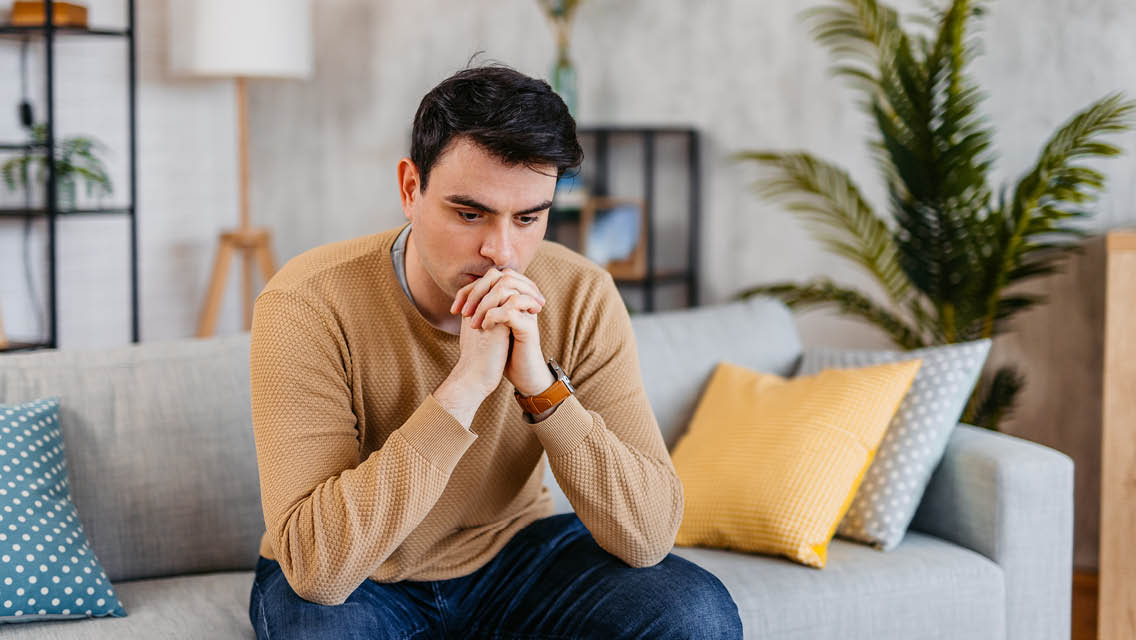Patrick was transitioning from an intensive outpatient treatment program for managing his mental illness. His social worker recommended that he start attending a weekly aftercare meeting — a type of posttreatment group in which people support one another’s progress. Patrick agreed, but he wasn’t quite sure what to expect.
“I knew I would be meeting with people who shared my experience,” he recalls, “but I was surprised by the openness with which I was welcomed by the other group members.”
When we think of therapy, many of us imagine the patient and the practitioner alone in a quiet room. But that’s not the only therapy modality.
“People often assume that group therapy is not as effective as individual therapy,” says Ohio-based psychologist Martyn Whittingham, PhD, a fellow of the American Psychological Association and American Group Psychotherapy Association. “In fact, the evidence shows that group therapy is as effective as individual therapy for a wide range of conditions. Well-run groups can be places for deep healing and connection — and can be profound and life changing.”
Group therapy offers a host of practical benefits, including accessibility: It’s typically less expensive than individual therapy, and depending on the format, it may allow for more flexible participation.
Groups also provide a valuable space for collective healing. Because members both give and receive support, the community can instill a unique sense of purpose, compassion, and hope for the future.
Why Group Therapy?
Psychiatrist Irvin Yalom, MD, is widely considered the foremost expert on group therapy. In his 1970 book The Theory and Practice of Group Psychotherapy — which remains a standard text for graduate training — Yalom identified several healing factors unique to group dynamics.
Participating in a discussion helps members refine social skills like active listening, empathy, and tolerance for differing opinions. The setting offers a space in which members can build awareness of their own habits as they play out in real time. Then, they can use the group as a safe place to practice new behaviors.
“Well-run groups can be places for deep healing and connection — and can be profound and life changing.”
There is healing in community as well. Yalom identified group cohesiveness — the sense of belonging among one’s peers — as a key benefit of the group model. Further, hearing from others who are struggling helps people realize they’re not alone, and witnessing peers overcome their struggles instills a sense of optimism.
Yalom also contended that the act of supporting others imparts benefits to both the helper and the helped. Patrick’s experience confirms this theory.
“While it is helpful to receive clinical care outside the group as well, the wisdom that group members have provided me comes from lived experience and a genuine commitment to do the work toward a healthier life,” he explains. “Being in group therapy has helped me live more openly and authentically because the group is a space where my experience is shared with people who accept me as I am.”
What to Expect
Facilitators typically require prospective members to complete an intake process, which may involve interviews to gather information and gauge whether you’re a good fit for the group. The intake is also an opportunity to decide whether the group is a good fit for you.
“Always ask the group leader about goals, expectations, and potential risks,” Whittingham advises. “Also ask about fee structures, attendance policies, and how long the group runs for.”
Groups tend to develop their own culture and norms over time. Much of this happens organically, but the facilitator may elicit feedback from members, such as protocols around absence or delivering constructive feedback.
If you’re entering an open group, you may find that these rules are already established. Joining a group in which everyone is new, on the other hand, means building the culture together.
At the intake and periodically throughout the course of the group, facilitators should address confidentiality. In individual therapy, everything you share stays strictly in the therapist’s confidence. In a group setting, confidentiality is expected but cannot be guaranteed. Members operate on an honor system, trusting that each will keep the others’ stories private.
Most clinical groups include eight to 12 members, while more informal groups, such as Alcoholics Anonymous, sometimes allow as many people as can fit in the room.
If you’d prefer to participate remotely, you often can. Many groups converted to telehealth during the pandemic and may continue to offer online options. Some use apps and other digital tools. For example, addiction support group SMART Recovery (Self-Management and Recovery Training) offers a CheckUp & Choices app to facilitate accountability and support whenever it’s needed.
Prep Work
Most people can benefit from group therapy. Often, the most important question to ask yourself when considering it is not if, but why.
What are you hoping to get from the experience? Concrete skills and knowledge? More social confidence and stronger relationships? Or simply a space to share and feel supported?
“Members should also consider how they can give back to the group,” Whittingham explains. “People are often surprised to find that they can be helpful, too. On the other hand, people who are used to dominating a room might need to consider how they can allow others the space to be heard.”
In some cases, it may be necessary to start individual therapy first. This is especially true if hearing other people’s stories could be more triggering than healing, as is often the case with trauma survivors. “Meeting with a therapist to discuss what type of group might be a good fit is an important first step in making sure the experience will be a good one,” he adds.
Consider, too, how ready you feel to make a change. Someone who denies that they have a drinking problem, for example, wouldn’t be served by joining a group of individuals committed to sobriety — while someone already committed to their progress, like Patrick, might find strength in numbers.
“Groups can be immensely enjoyable and enriching, but change can also be uncomfortable, whether in group or individual therapy,” says Whittingham. “So being prepared to work through and be supported in that discomfort is an important choice.”
Types of Group Therapy
- Psychoeducational groups offer education related to a particular concern or condition, such as substance-abuse recovery or eating disorders.
- Skill-development groups help members learn coping strategies and tools for change specific to their area of concern.
- Support groups generally follow a more open-ended approach. Often oriented toward individuals who are navigating a difficult loss or life change, these groups center on giving and receiving more general mental-health support.
- Interpersonal process groups work well for individuals seeking to build healthier relationships. These groups may be geared toward a specific interpersonal challenge, such as difficulty trusting others or a tendency to people-please.
In general, groups are either closed, in which all members begin and end at the same time and no newbies can join after the group launches, or open to new members whenever there is space, allowing membership to evolve over time.
Interested in joining a group, but not sure where to find one? If you’re already working with a mental-health practitioner, inquire about referrals within their professional network.
Otherwise, outpatient psychiatric hospitals often offer in-house groups, as do community mental-health centers, university counseling centers, and Veterans Affairs facilities. Psychology Today features an online directory of groups within geographical regions; the American Group Psychotherapy Association offers a listing of Certified Group Psychotherapists.
This article originally appeared as “Strength in Numbers” in the November 2021 issue of Experience Life.





This Post Has 0 Comments